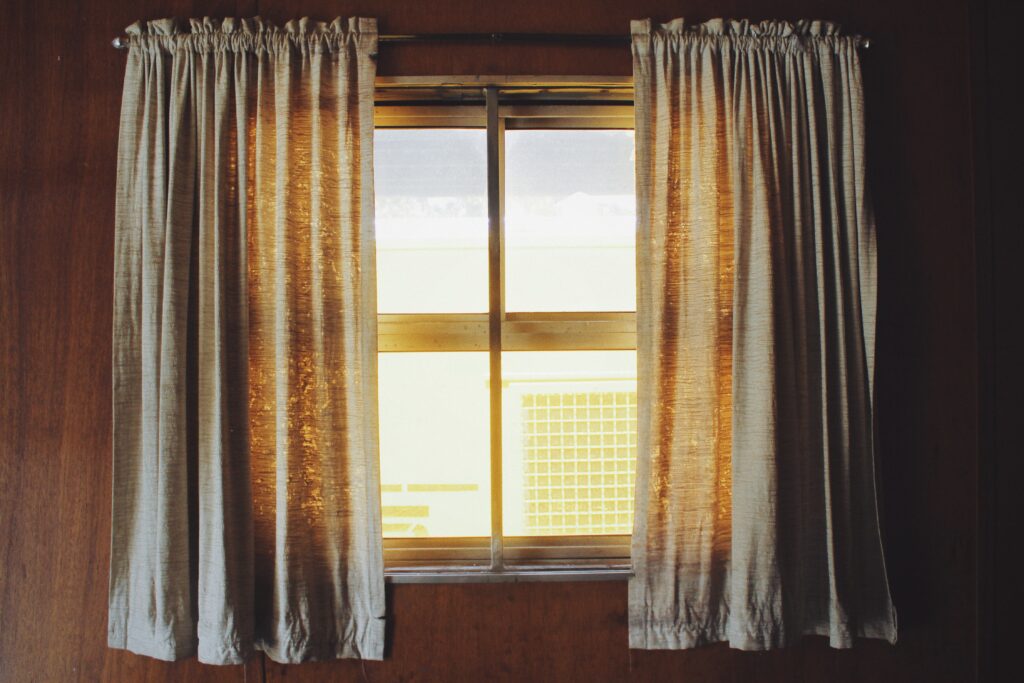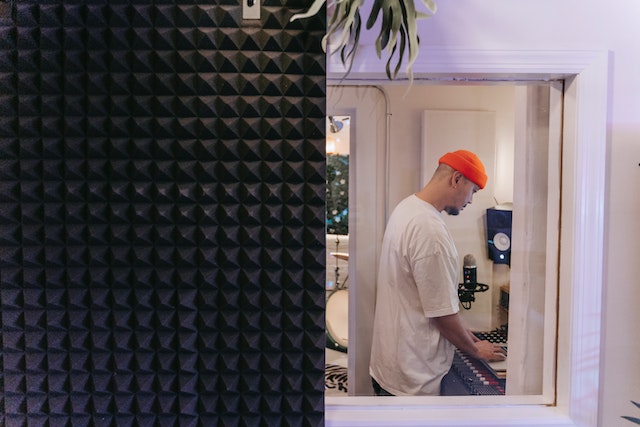
We live in an age and time where everyone is supposed to mind his or her business. This has nothing to do with being melancholic or anything of that sort but everything to do with not having your business in the ears of neighbors. Many people have asked the question “How To Soundproof A Room Cheaply”
There are quite a few ways to soundproof a room for cheap, and those methods would be shared with you below. Here are the methods to soundproof a room cheaply:
- The use of curtains.
- Provide a soft landing for the reflected sound.
- Area rugs.
- Using a blanket.
- Soundproofing foam, and so on.
Contents
- 1 How to make your room soundproof from inside
- 2 How To Soundproof A Room Cheaply – Detailed Guide
- 3 Can soundproof work both ways?
- 4 FAQs
- 5 What household item can I use to soundproof a room?
- 6 What materials can stop sound?
- 7 What can I put on my wall to block noise?
- 8 Conclusion – How To Soundproof A Room Cheaply
How to make your room soundproof from inside
The basics of successfully soundproofing your home from noise within or outside will depend on you identifying the following factors:
- The source of the noise or sound.
- The point of entry of the noise or sound.
- The reflection point of the noise or sound.
Let me briefly explain;
The source
Just like everything else, you need to know the primary source of your sound problem before it can be fixed. It could be car horns, loud music or orgasm sounds from your neighbor(s) having sex. Having first-hand knowledge of what you are dealing with goes a long way in addressing the problem.
The point of entry
The most likely point of entry of a sound regardless of whether you’re trying to prevent it from going out or coming in is usually the walls (especially if you are sharing one with a neighbor), the windows, and your floor. Once you have the answer locked in, you are one step closer to solving your problem.
The point of reflection
The point of reflection is the area where the sound bounces off as soon as it gets into the apartment. This area is usually directly opposite where the sound disturbance is coming from, which is another reason why you have to be sure of the point of entry before using any of the sound techniques I’ll be sharing now so it doesn’t backfire.
How To Soundproof A Room Cheaply – Detailed Guide
Soundproofing your home needs a detailed guide and the guide required would be provided below.
Step 1: The use of curtains

Unlike what some people think, curtains do not just prevent wandering eyes from your apartment, but they also do a very good job of absorbing sound, especially from within.
Using a thick curtain, especially a soundproof curtain like this one (click here to view) of any color of your choice will be very cheap in the long run, especially when they can last for a very long time.
Normal curtains on the other hand will only solve the problem of outsiders peeking in, but not sound going in or out.
Step 2: Provide a soft landing for the reflected sound

After identifying where the sound is coming from (the point of entry), you can start ensuring the area opposite where the sound is coming from has a soft surface.
This could be in the form of wallpaper, furniture, or simply hanging a curtain depending on what you have available. The sound entering your apartment will become more annoying if it reflects off a hard surface.
Step 3: Area rugs

If the source of the noise is coming from a neighbor beneath your room, you really have to consider using an area rug to counter the noise from that point of entry.
Area rugs like this one (click here to view) provide your feet with a cozy feel and comfort whilst giving your legs the needed comfort. It also has good traction to the ground that prevents it from moving when you are underneath.
Lastly, using a pad underneath the rug will further boost the soundproof properties like this one, especially if there’s also noise disturbance from above.
Step 4: Using a blanket

Blankets are another inexpensive option, especially if you have a couple you can spare, they can be very useful if the point of entry is from your walls.
The best way to use blankets in your home would be to hang them over the point of entry using nails and clips where appropriate, but you have to ensure the blanket in question is attractive enough to fit your room decor, else it could be a nuisance decor-wise.
If blankets don’t sound like an idea you can follow, you may want to consider hanging thick curtains around your walls. With this, the sound will not get in or out of your room. You could also use a blanket for this as well.
Step 5: Soundproofing foam

Soundproofing foams are relatively the cheapest on this list, and the only reason why I didn’t mention them before now is that they may not have any other use aside from simply absorbing sound (you could find other use for it though), but they do a very effective job regardless.
If you are someone who enjoys a lot of items in space (lots of furniture greatly helps to soundproof as well), soundproofing foams will definitely help in this regard and they also help to improve your room decor as well.
Step 6: Hanging acoustic panels

Using acoustic panels may actually be the most expensive option on this list, but it’s definitely worth a try as they can serve as a piece of artwork if you are into that kind of stuff.
They come in different colors to further improve the decor like this one (click to view) of your room whilst doing the job of properly soundproofing your room. Acoustic panels are also lightweight and should be hung at the point of reflection or entrance of the sound.
Step 7: Make good use of your furniture

The more furniture you have, the more soundproof your room will be. If you are someone who doesn’t like having pieces of furniture, please reconsider, as it is something you’ll need if you don’t want to go the extra mile in soundproofing your home.
Remember, the sound will not be absorbed if it reflects off a hard surface, which is why placing a chair with fluffy pillows at the area of reflection (opposite where the sound is coming from) will help absorb the sound going in or out of your room.
The idea of having lots of fluffy pillows like this one will also give your pets lots of options to play with as they are very safe for pets.
Step 8: Using a background sound
Providing a counter sound to the one you are trying to prevent is another great way to soundproof your room. This is more effective if you have a good sound system installed in your home like this one (click here to view), but you would want to consider using a moderate volume so you don’t also become a reason your neighbors need to soundproof their room.
If you aren’t sure of what can drown out the sound as they come in, you should consider using sound machines as they have a variety of soothing and white sound to not only counter the sound coming in, but also provide the listener with a relaxing feel especially before sleeping.
Also Read: What Materials Absorb Sound? – The Types And How They Work
Can soundproof work both ways?
Oh yeah! Soundproof can work both ways. As I earlier stated, preventing sound from coming in is the same as preventing sound from going out. However, you should hold the following factors to heart before going about it;
No room can be completely soundproof
Except under special conditions, your room cannot be completely soundproof especially if you stay with neighbors and have adjoining walls.
Even if a room is made completely soundproof like an experiment carried out recently, you will likely start hallucinating after a while which isn’t good for anyone.
The best you can get is incomprehensible sounds which will sound more like very distant echoes depending on the sound being made at the time. Hey, I’m just saying this so you don’t expect a pin-drop silence when you are done with some of the tips I’ll be providing shortly.
Soundproofing works both ways
This is a fact many homeowners looking to soundproof their homes may not know. Trying to prevent sound from leaving your room is the same as trying to prevent sound from coming in and vice-versa–you can’t have one without the other.
So, if you’re looking at having it on a one-way street then I’m sorry to burst your bubble. Think of your options before going ahead to apply some of the soundproofing techniques I’ll be sharing right away.
FAQs
What household item can I use to soundproof a room?
Aside from the use of furniture and blankets I earlier mentioned, you should also consider the following household items or repairs:
- Try fixing your floorboard if they are loose, especially if that’s the point of entry.
- Hang paintings on your walls if you have any.
- Bookshelves will also help a great deal.
- A thick mattress helps a lot.
- Carpets and rugs are other options you should consider if the point of entry is below.
What materials can stop sound?
Silicone has been known to do a good job when it comes to damping sound if used correctly, but if it’s something above your pay grade, having soft furniture or lots of furniture around also helps.
What can I put on my wall to block noise?
If you are into books, a bookshelf is a great place to start. Hanging curtains or blankets will also help as well.
Conclusion – How To Soundproof A Room Cheaply
You don’t have to pay through your nose to have the quiet we generally seek and deserve. I hope the tips shared in this article will help you in that regard. Kindly drop any comments or suggestions you may have regarding this topic in the comments section. Cheers!

Pingback: How Do You Soundproof A Room So No One Can Hear You? -
Pingback: Are Hotel Rooms Soundproof? - Find Out Now! -
Pingback: Can You Soundproof A Dog Crate? -
Pingback: Can I Soundproof My Ceiling? - Is It Really Possible? -
Pingback: Does Soundproof Foam Work? - Here's What You Need To Know -